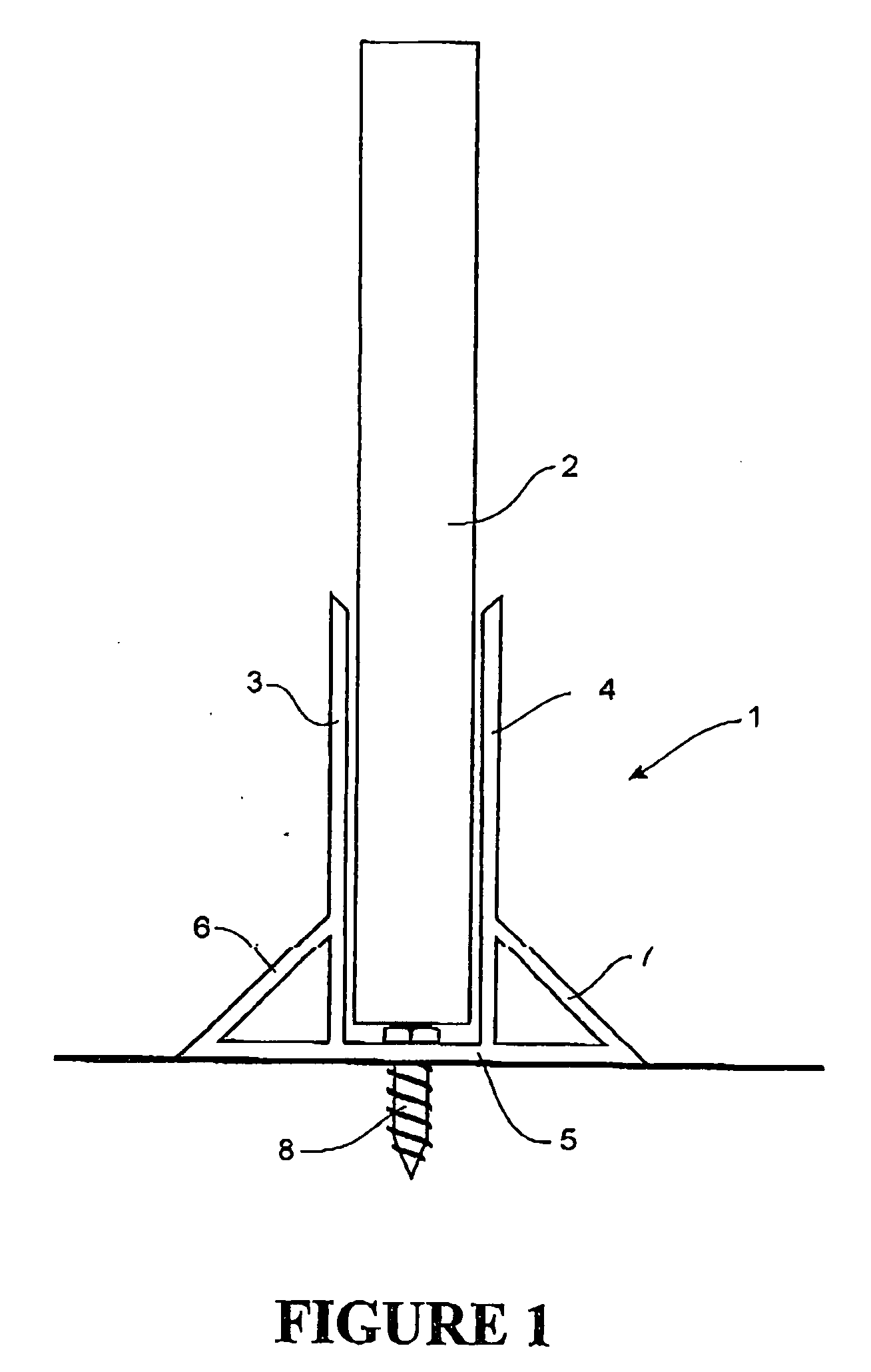Apparatus and method for forming concrete panels
a technology of concrete panels and apparatus, applied in the direction of moulding surfaces, moulding fastening means, shaping building parts, etc., can solve the problems of inability to reuse, form damage, and cast surface damag
- Summary
- Abstract
- Description
- Claims
- Application Information
AI Technical Summary
Problems solved by technology
Method used
Image
Examples
Embodiment Construction
[0055]FIG. 2a is a cross-section of a form member 24 in accordance with the present invention. The form member comprises a pair of upright walls 10, 11 which are connected at their inner surfaces 14, 15 by a plurality of ribs 16, 17 and a base member 18. The form member includes a pair of chamfered surfaces 19, 20 extending between the upright walls 10, 11 and the base member 18. In this example, the external surfaces of the upright walls 12, 13 are parallel to one another and substantially perpendicular to the base member. However, it should be appreciated that the external surfaces can have any desired profile. It should also be appreciated that the chamfered surfaces 19, 20 are optional as is base member 18. The form member 24 also includes a flat top surface 25. This flat top surface is also optional.
[0056] The form member is of substantially uniform cross-section, except for a series of apertures for receiving fasteners positioned along its length. This is clearly seen in FIG....
PUM
 Login to View More
Login to View More Abstract
Description
Claims
Application Information
 Login to View More
Login to View More - R&D
- Intellectual Property
- Life Sciences
- Materials
- Tech Scout
- Unparalleled Data Quality
- Higher Quality Content
- 60% Fewer Hallucinations
Browse by: Latest US Patents, China's latest patents, Technical Efficacy Thesaurus, Application Domain, Technology Topic, Popular Technical Reports.
© 2025 PatSnap. All rights reserved.Legal|Privacy policy|Modern Slavery Act Transparency Statement|Sitemap|About US| Contact US: help@patsnap.com



